#1980s
In Memoriam: Marcello Gandini, an Automotive Design Master
The world lost one of its preeminent car designers today, as Marcello Gandini has passed away at the age of 85. Though perhaps best known for the flashy and outrageous Lamborghini Countach, Gandini’s pen was applied to many other Italian, German, French, British, Japanese, and Swedish concepts and production designs. Gandini’s prolific portfolio of work made a permanent mark on automotive design.
Junkyard Find: Gray-Market 1981 Mercedes-Benz 380 SEL
Of all the European-market new cars that flooded into the United States during the wild gray-market years of the early and middle 1980s, the Mercedes-Benz W126 S-Class appears to have been the most popular. Today's Junkyard Find is one of those cars, found in a self-service boneyard near Denver, Colorado.
Junkyard Find: 1986 Dodge Aries SE Four-Door Sedan
Lee Iacocca's Chrysler Corporation sold K-Cars in the United States for the 1981 through 1989 model years, saving itself from near-certain bankruptcy in the process. These cars are becoming difficult to find in the Ewe Pullets of the land, and I hadn't written about a true K in the Junkyard Finds series since way back in 2019. Today, we'll look at a K sedan that survived 36 years before being retired in California.
Junkyard Find: 1984 Chevrolet Corvette
Out of all the eight generations of Chevrolet Corvette production, the biggest success in the showrooms was the 1968-1982 C3. The C3 looked wild and boasted Jimi Hendrix and Joan Didion provenance, but it handled like a truck and power numbers were grim once the Malaise Era took hold. The General decided he'd be wise to make its C4 successor a cornerin' and brakin' machine, and today's Junkyard Find is a first-year C4 discovered in a Northern California car graveyard last year.
Junkyard Find: 1983 Volvo DL Sedan With 327k Miles
I've been writing about junkyardified cars here at TTAC since November of 2010, when I documented a pair of Fiat 128s in a Denver boneyard. Since then, we've seen plenty of discarded Volvos here, but no Volvo 200 Series four-door sedans!
Abandoned History: Oldsmobile's Guidestar Navigation System and Other Cartography (Part VI)
Sacrificing much, GM spent billions and billions of 1980s dollars on technology and engineering entities at the behest of CEO Roger Smith, who wanted to transform The General into a company more resembling a conglomerate like GE. Half a decade later Smith was gone, and the remaining brass began to unwind the costly EDS and Hughes deals and return GM to its standard operating procedure. But behind the layers of finance and paperwork, Guidestar GPS was developed. And the first time the public got to see it was in 1994 in a very exciting debut.
Abandoned History: Oldsmobile's Guidestar Navigation System and Other Cartography (Part V)
As we learned in our last installment in this series, the lowering of the digital and governmental barrier between civilian and military GPS assets in 1996 was a boon to the consumer side of navigation, and (per our comments) land surveying as well. It was a timely turn of events for General Motors after the Orlando area TravTek experiment of 1992 proved either too costly to scale, or alternatively not valuable enough in the eyes of consumers. Before we get to GuideStar, we need to cover much context around why GM was so keen on high-tech things in the Nineties, and the massive amounts of money it spent in its pursuit.
Abandoned History: Oldsmobile's Guidestar Navigation System and Other Cartography (Part IV)
General Motors spent a lot of time and money in the development of TravTek GPS. As we learned in our last installment, the comprehensive (if clunky) navigation system used a touchscreen, had live traffic information, and could even make phone calls. Installed in 100 Toronados used in the greater Orlando area for an entire year, GM, AAA, and various government parties were eager to see just how useful the system was and if it was worthwhile. Narrator: It wasn’t. Let’s find out why.
Junkyard Find: 1982 Peugeot 505S Turbodiesel
Peugeots! The final model year for new Peugeot cars in the United States was 1991, though I find the occasional Mexican-market Pug here and we can still purchase a new Peugeot pepper grinder right now. Back in the 1980s, though, Peugeot managed to hang onto a semblance of American marketplace relevance with the 505. I've found an oil-burning 505 in a boneyard in California's Central Valley, so let's take a look.
Abandoned History: Oldsmobile's Guidestar Navigation System and Other Cartography (Part III)
We return to our spicy Oldsmobile content this week, with the introduction of GM’s first publicly tested in-car navigation system, TravTek. Arriving in the early Nineties, TravTek was launched more than two decades after GM’s magnet-based DAIR prototype failed to make production. This time The General was determined to make good on their big investment. Onward, to Orlando!
Junkyard Find: 1986 Dodge Lancer ES Turbo
The branches of the Chrysler K-Car Family Tree are far too numerous to describe here, since so many different K-derived cars and minivans were built from the 1981 through 1995 model years for the North American market. One of the rarest types is the 1985-1989 Dodge Lancer, and I've found an example in a Silicon Valley self-service wrecking yard.
Junkyard Find: 1987 Chevrolet Sprint ER
What was the most fuel-efficient (mass-produced, internal combustion-powered, highway-legal, non-gray-market, four-wheeled, et freakin' cetera) new car available in the United States during the 1980s? No, not the Toyota Starlet or Corolla Tercel, not the Honda CRX HF, not the Subaru Justy. It was the Chevrolet Sprint ER, and I've found a nicely intact example in a car graveyard just east of Sacramento.
Junkyard Find: 1982 Mercedes-Benz 300 D With 417k Miles
If you owned a car that had traveled more than 400,000 miles during its life, could you bear to send it into the cold steel jaws of The Crusher? In the course of my junkyard adventures, I've found quite a few vehicles that met such a fate. Here's a very solid Mercedes-Benz W123 oil-burner that now languishes in a self-service boneyard in Phoenix, Arizona.
Abandoned History: Oldsmobile's Guidestar Navigation System and Other Cartography (Part II)
In last week’s installment of Abandoned History, we learned about General Motors’ 1966 magnet-based primitive navigation system, DAIR. The inclusive system featured emergency messages, traffic bulletins played inside the car, and route guidance. DAIR never progressed beyond the concept stage and two total test vehicles, largely because it would have meant buried magnets and accompanying signal relay stations at every major intersection in the country. Some 25 years later The General tried it again, but technology progressed considerably by that point.
Junkyard Find: 1988 Pontiac Sunbird SE Coupe
Even by the standards of the far-flung General Motors Empire, the J-Body was found everywhere, from the Vauxhall Cavaliers of Great Britain to the Isuzu Askas of Japan to the Daewoo Esperas of South Korea. In the United States of the 1980s, the Chevy Cavalier was the J-Body King, but its Pontiac-badged sibling, the Sunbird, was a not-so-distant second place in the J sales race. Today's Junkyard Find is a sporty Sunbird coupe, found in a yard just south of Denver, Colorado.


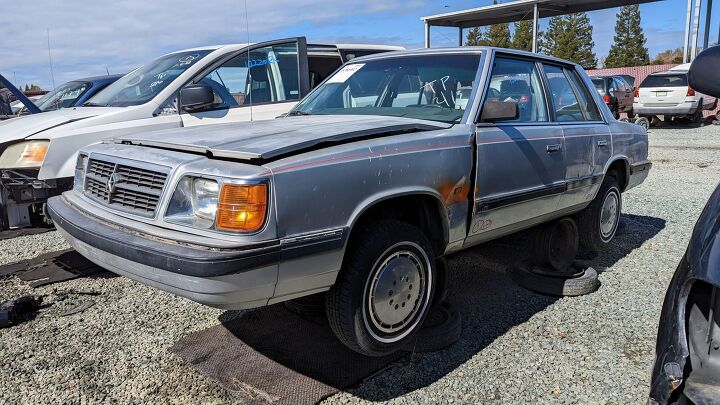
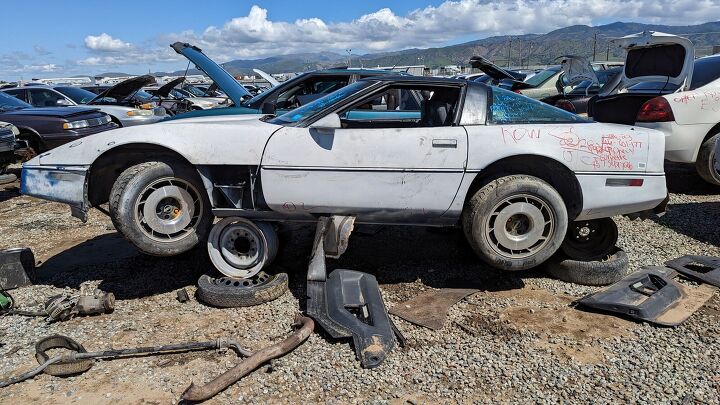
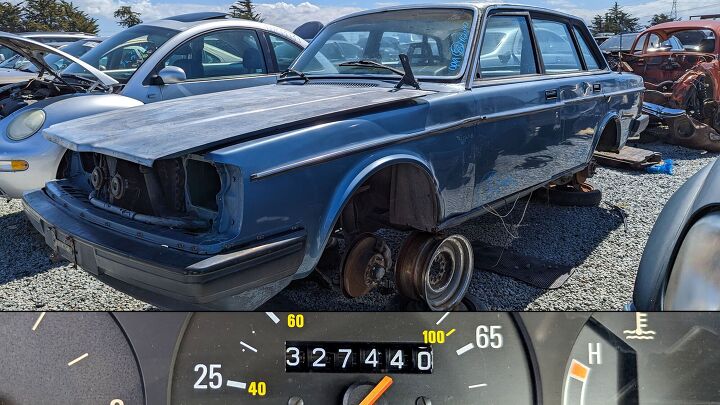
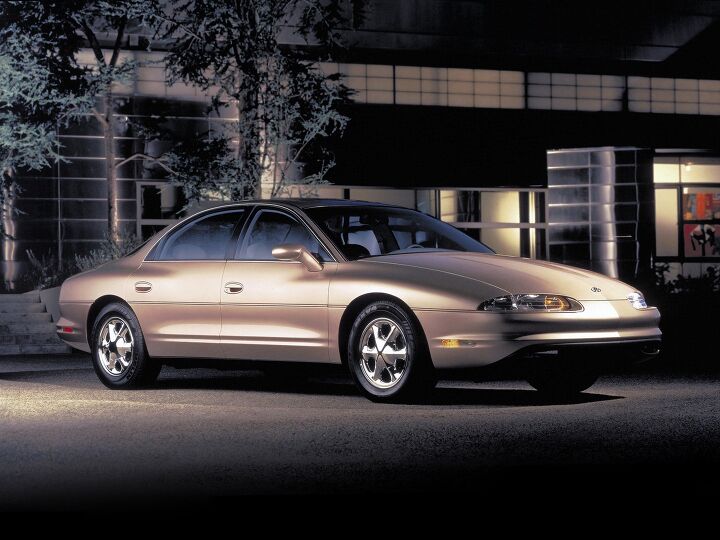


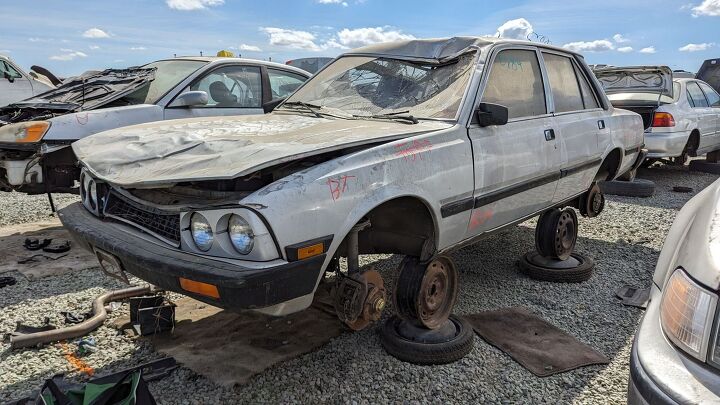



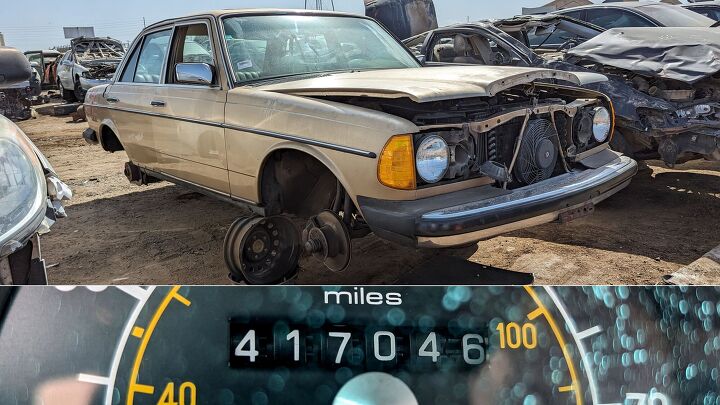

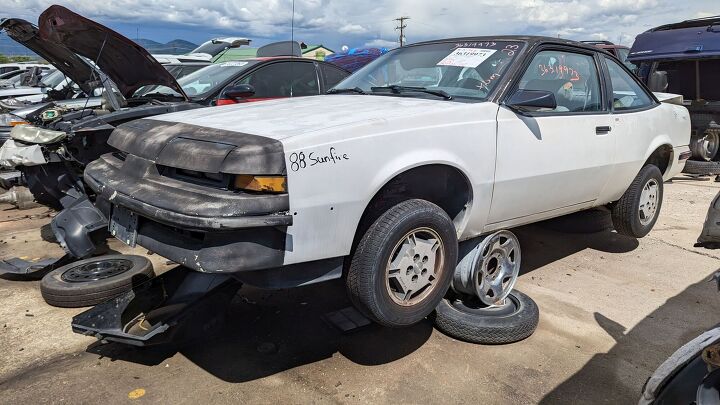












Recent Comments